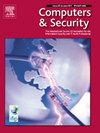A trajectory privacy protection method based on the replacement of points of interest in hotspot regions
IF 4.8
2区 计算机科学
Q1 COMPUTER SCIENCE, INFORMATION SYSTEMS
引用次数: 0
Abstract
Location-Based Services (LBS) already provides technical support for advertising, bus scheduling, and personnel tracking. However, the trajectory data published in LBS contains some sensitive semantic information related users in some locations. Through mining these data, sensitive personal information can be disclosed, such as user’s living habits, interests, daily activities, social relations, and health condition. It is a challenge to provide users with high-quality LBS while protecting user privacy. In order to address the disadvantages of current trajectory privacy protection methods, we propose a method of trajectory privacy protection with the replacement of points of interest () based on hotspot clustering. Firstly, user stay points are extracted based on the speed threshold using a sliding time window, user stay areas are merged by the distance threshold based on user stay points, and user hotspot regions are extracted from all user stay areas using . Then, according to the semantic and distance features of the in the hotspot regions, the sensitive regions meeting the user’s privacy needs are constructed, and the are replaced in the sensitive regions according to the privacy budgets. Finally, some locations in the sensitive regions are reconstructed to minimize the trajectory change. The experimental results show that our method can improve the usability of protected trajectories about 13.8% to 16.5% compared to the differential privacy method under the same level of privacy protection.
求助全文
约1分钟内获得全文
求助全文
来源期刊

Computers & Security
工程技术-计算机:信息系统
CiteScore
12.40
自引率
7.10%
发文量
365
审稿时长
10.7 months
期刊介绍:
Computers & Security is the most respected technical journal in the IT security field. With its high-profile editorial board and informative regular features and columns, the journal is essential reading for IT security professionals around the world.
Computers & Security provides you with a unique blend of leading edge research and sound practical management advice. It is aimed at the professional involved with computer security, audit, control and data integrity in all sectors - industry, commerce and academia. Recognized worldwide as THE primary source of reference for applied research and technical expertise it is your first step to fully secure systems.
 求助内容:
求助内容: 应助结果提醒方式:
应助结果提醒方式:


